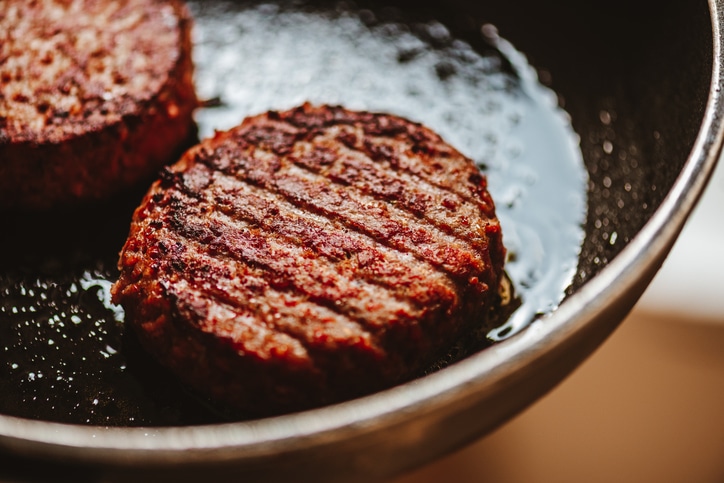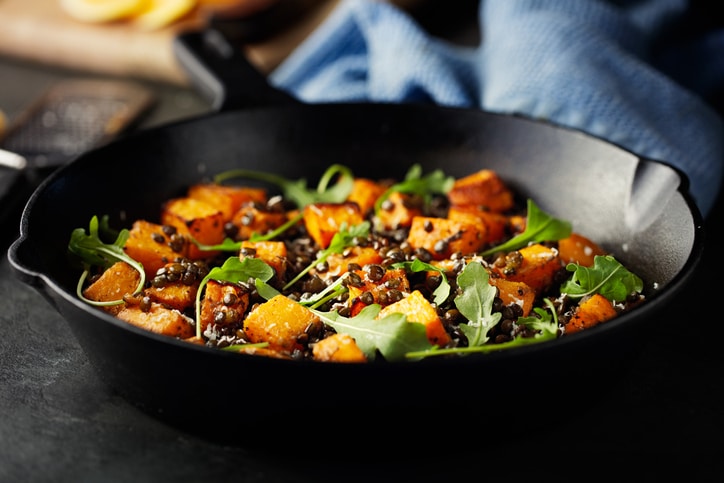For many health-conscious consumers, replacing meat with plant-based alternatives seems like a no-brainer: It contains less cholesterol and more fiber, and it’s better for the environment.
That is until you consider just what goes into these products and how much processing it requires to make soybeans, peas, and wheat gluten taste like hamburgers, sausages, and chicken nuggets.
“Plant-based meat alternatives may have fewer saturated fats and slightly more fiber than real meat,” says Tina Joseph, DO, family medicine physician on the medical staff at Methodist Mansfield Medical Center. “However, not much has been studied about the ‘ultra-processing’ and other ingredients that contribute to these fake meats.”
While faux meat often contains just as much protein as real meat, most of these products contain some saturated fat and far more sodium than chicken, beef, and pork when they are raw and unprocessed.
“The sodium content is something that patients with heart disease, high blood pressure, or diabetes need to be cognizant about,” Dr. Joseph says.
Here are a few more things to keep in mind when choosing plant-based alternatives to real meat.

There are many options when it comes to plant-based meats, and some sacrifice nutrition for taste.
READ THE LABEL CLOSELY
Plant-based meat alternatives have been around since at least 1896 when corn flakes inventor John Harvey Kellogg created Nuttose, a peanut-based meatless meat that became popular at the vegetarian nutritionist’s sanitariums.
Since then, plant-based meats have grown into a multibillion-dollar business with a multitude of options made from soy, jackfruit, wheat gluten, and pea protein. After so many years, you might think the nutritional value of meatless meat would be clear.
“There have been conflicting results from research studies looking at the actual benefits of these plant-based alternatives versus real meat,” Dr. Joseph says.
With so many choices, it’s safe to say not all fake meat is created equal, and some products may be even less nutritious than real meat.
As with any ultra-processed food product, it’s always wise to check the nutrition label to make sure you know what you’re eating. Some brands contain more saturated fat and sodium than the real thing, and they all contain a long list of unpronounceable additives.
If you’re worried about replacing protein in a meatless diet, you should know there are plenty of whole foods that can accomplish that goal.

Plant-based burger patties contain as much protein as a real hamburger, but often more sodium.
PLANTS HIGH IN PROTEIN
Plant-based burgers, in particular, pack plenty of protein in a relatively small package, up to 20 grams or more per serving.
“Some plant-based meats may have comparable amounts of protein to their real-meat counterparts,” Dr. Joseph says.
But also consider that you’re paying, on average, about 40% more for a pound of plant-based meat than hamburger meat. There are far less expensive and more nutritious options to replace meat protein with plants.
“For vegetarians looking to increase their protein intake, legumes like lentils, chickpeas, black beans, and black-eyed peas are good sources of protein,” Dr. Joseph says. “These ingredients are used widely in Mediterranean, Asian, and Indian cooking.”
Protein is essential to maintaining muscle mass and promoting a feeling of fullness after meals, ultimately helping with weight loss goals. And there are many options beyond plant-based meat:
- Green peas contain about 9 grams of protein per cup, and they’re also a good source of vitamin C, iron, folate, and fiber.
- Seitan, also known as “wheat meat” because it resembles meat when cooked, contains a whopping 75 grams of protein per 100 grams. Just know that it’s also high in calories and sodium and should be avoided by anyone with sensitivity to gluten.
- Lentils are legumes like beans but are distinguished by their lens-like shape (flat and round). When cooked, in a soup or side dish, lentils contain about 18 grams of protein per cup.”
Vegetables can be just as filling as meat, like this skillet of roasted butternut squash and green lentils.
PRODUCE VS. PROCESSED
There’s nothing wrong with replacing meat with plant-based alternatives when done in moderation, Dr. Joseph says. Just be aware there are healthier options, and most of them are in the produce aisle.
“While consuming plant-based meats on occasion may be harmless,” she says, “eating meals with real vegetables, fruits, whole grains, and legumes on a daily basis will provide you with a more balanced and nutritious diet.”
Dr. Joseph recommends devoting half of your plate to a vegetable and a quarter to protein while limiting carbohydrates to the last quarter, ideally a whole grain, brown rice, quinoa, or bulger.
Consider making the vegetables the main course rather than the side dish that they’re often relegated to in American diets.
“One easy way I like to integrate more plant-based meals into my diet is by roasting veggies like eggplant, cauliflower, broccoli, carrots, chickpeas, or beets with some olive oil, salt, pepper, and whichever spices or herbs I have on hand,” Dr. Joseph says.
Plant-based meats taste more like the real thing than ever before, but that’s because they’re far more processed than ever before. And remember food doesn’t have to taste like meat to taste good.







